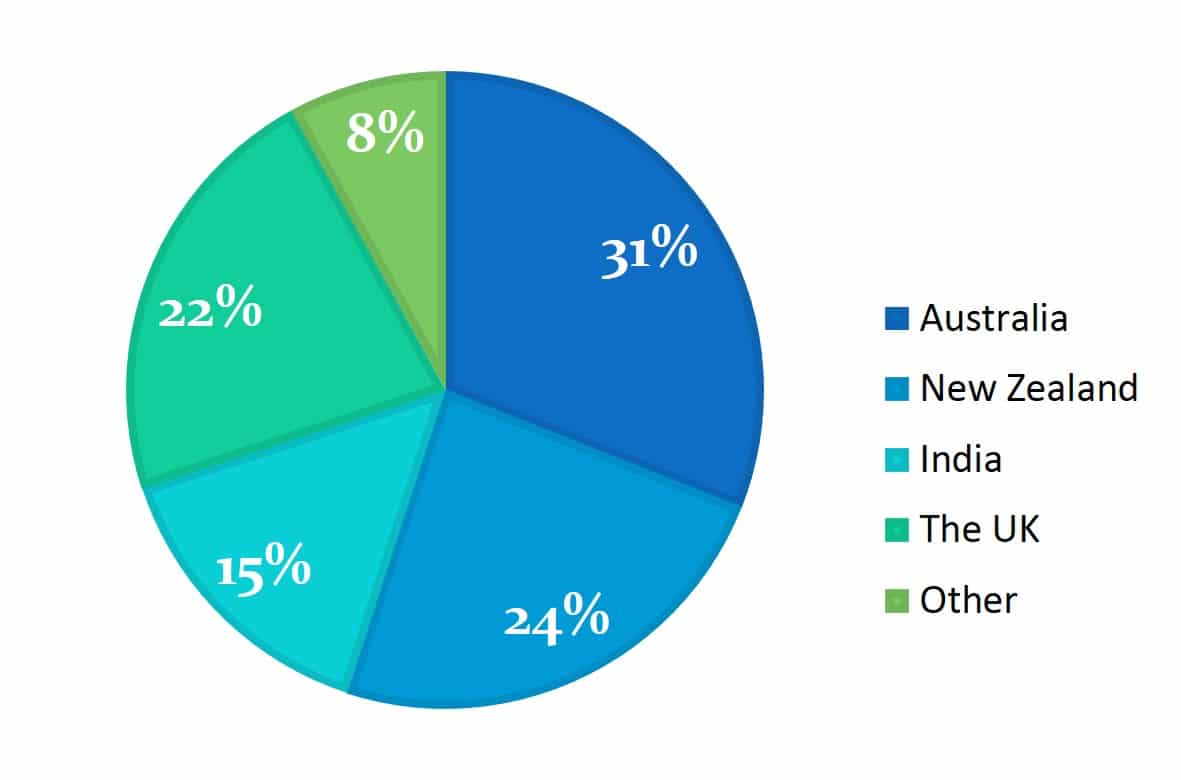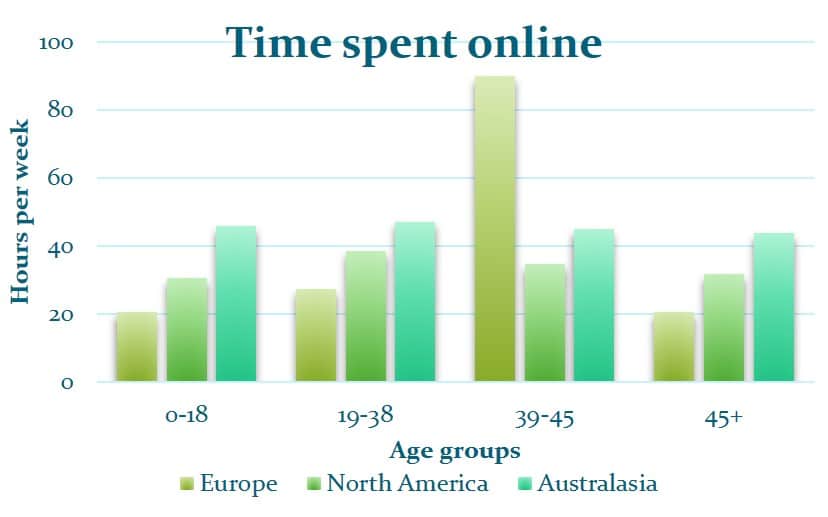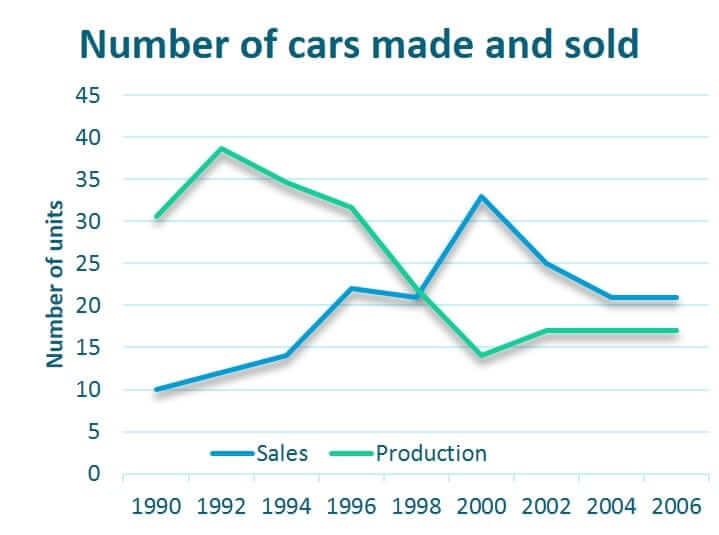On this page, we will look at The 6 types of Academic IELTS reports, as well as the instructions you need to follow. The aim of Task 1 in the Academic Module is simple – you need to transfer information. That means to describe what you see in the question. Let’s start by looking at the 6 types.
[sc name=”writing-assessment”]The 6 types
| Pie charts.
The total of a pie chart is 100%, divided into different categories. In this example, the categories are Australia, New Zealand, India, the UK and a final category called ‘other’. Each piece of the pie chart is called a section and shows a proportion of 100%. A single pie chart does not show changes over time. They show data, commonly in percentages. |
 |
| Bar charts.
Bar charts. A bar chart is divided into columns. A bar chart can show three different forms of measurement (in this case, different age groups, different continents and different number of hours per week. |
 |
| Line graphs.
Line graphs. Line graphs commonly show data over time (in this example, from 1990 to 2006). With line graphs, it is also quite easy to identify trends – that is, the general direction of something. In this example we can see that production increased, then decreased, increased again and then stabilised. In the IELTS test, line graphs compare at least two and up to five different categories. In this example, we are given only production and sales. |
 |
| Tables.
Tables. Tables often show very specific data. In this example, we can see that the average age for males in Japan is 41.1 years. Because the data is often very specific, it can be a little more difficult to identify trends. With tables, there can often be more data than you will have time to write about, but it is important that you do not just list what you see. |
 |
| Processes.
A process. The first step in writing about a process is to decide where your description will start and finish. Sometimes this is clear, but it can be harder in a cyclical (never ending) process like the water cycle. A process is a little different to other Task 1 types as it is very important that your essay follows the process logically from beginning to end. It can sometimes be quite difficult to write 150 words about a process. |
 |
| Diagrams.
A diagram. The last Task 1 type is writing about a diagram. It is important that you look closely at what is being presented and carefully read all of the labels attached to the diagram. In this example, there are 6 different labels. To write 150 words and get a good result, you will need to do more than just describe what is labeled. You will need to describe most of what you see. In the example, you could write about the overall shape (wider at the bottom and a brand name is shown for example) |
 |
You need to be prepared to write your report on any of these types of Academic IELTS, but keep in mind that some Task 1 questions combine two or more of these types – for example, you might have to describe information that comes from a table AND a pie chart.
Instructions for Task 1 Academic IELTS
Each task one type has the same set of instructions. The first instruction is that You should spend about twenty minutes on this task. You only have one hour to complete Task 1 and Task 2, so it is important that you do not spend more than about 20 minutes on Task 1.
The second instruction is that you should Summarise the information by selecting and reporting the main features and make comparisons where relevant. This means that you should describe the information given, but only about what you see. Do not add opinions or anything else that is not given on your exam paper.
The final instruction is that You should write at least 150 words. Writing fewer than 150 words can mean you lose points.
[sc name=”writing-assessment”]
